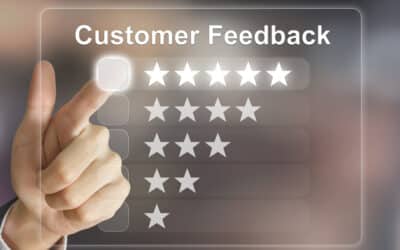10 Best Practices for Technical Support
Competition is a powerful driver in business, and top-notch technical support is a pivotal factor in competing successfully and in retaining customers. Outstanding help desk support means going that famous extra mile to satisfy the customer and build brand loyalty.
And to paraphrase Zig Ziglar’s famous quote, you can’t allow traffic jams on that extra mile! Here are ten best practices to ensure your tech support gives your customers the superb level of service they deserve:
#1 – Provide omnichannel support
For your help desk to be most effective, you need to communicate with customers on multiple channels. This includes live chat, email, video calls, phone, and social media. The crucial point is to make it easy for your customers to find and communicate with you on whichever channels they wish to.
Related content: What is help desk support / technical support?
#2 – Facilitate and encourage self-service
Many customers prefer self-service options that allow them to resolve issues by themselves. Self-service also significantly reduces ‘customer roadblocks’ and takes pressure off your support agents. So does posting FAQs, troubleshooting articles, video tutorials and demos, as well as having discussion forums.
#3 – Store valuable customer data
Having valuable customer data for your customer support agents to access helps greatly in improving the standards of your help desk support. Modern customer support software apps allow you to store and link data with a customer’s identity, so that the tech support agent can access it in real-time when they’re dealing with the client.
Issues can therefore be speedily resolved as agents provide effective and relevant solutions quickly. Customer frustration is reduced, and customer care agents find their jobs more enjoyable and less stressful.
#4 – Solve problems promptly
Customer retention hinges very much on how fast you handle customer queries. The faster your help desk solves a customer’s problems, the better for everybody concerned. This leads to greater customer satisfaction and consequently better customer retention.
Live chat works well for resolving simple problems, but more complex customer issues might need a voice call, email, or a video chat response. It’s vital to reduce hold times to a minimum, and chatbots are useful in this regard until a live customer support agent is available. However, don’t use chatbots to deal with complex issues, and never pretend that customers are talking to a live agent.
#5 – Invest in training and motivating your technical support team
Your help desk is the public face of your company, so it must come across as caring, competent, and professional. Select your agents carefully, and then provide them with quality training that focuses on and develops their people skills. Emphasise the importance of active listening, empathy, helpfulness and remaining calm and courteous.
Highlight accountability – it’s the individual agent’s responsibility to solve the customer’s problem and take pride in doing so. Ensure that your support team has the right tools (like screen sharing), and are empowered to effectively offer solutions like a refund, replacement item, or special offer.
#6 – Engage actively on a range of social media channels
You need to do more than establish and maintain a visible presence on social media for your brand. You need to actively engage with your customers there too. Listen to your customers and take note of their likes, dislikes, concerns, and expectations. Keep in mind that many tech-centred discussions take place on sites like Reddit, so it might be worth establishing a presence there.
#7 – Build a knowledge base
Building a knowledge base about your brand, products, policies, and services, is one of the most important factors in creating an excellent help desk. It makes it much easier for an agent to respond efficiently to a customer’s problem if they have an effective knowledge base at hand that provides them with the most frequently reported questions, issues, answers and solutions. You also need to keep this knowledge base up to date.
#8 – Use client data effectively
Harvesting and maintaining customer information that agents can access is tremendously helpful to your technical support agents. Having access to customers’ names, phone numbers, email addresses, buying history, previous interactions, etc, means support staff can personalise interactions, understand the customer’s problem more easily and not have to ask endless questions. If customers need to be referred to other support agents, it also avoids the frustrating scenario of customers having to repeat the same information over and over.
#9 – Measure your technical support
All interactions between agents and customers should be evaluated with an eye to improvement. Factors that can be measured include the number of support tickets closed, the average time taken in doing so, as well as the average time needed to resolve equipment failures. This data will highlight the help desk’s strengths and weaknesses. Information from social media accounts, your CRM system and website analytics should also be harvested.
#10 – Set KPIs and use analytics/reports
Setting Key Performance Indicators is important in measuring the success of your help desk and evaluating the performance of your technical support agents. The information gathered will help you analyse trends, identify problems, and implement changes if needed. Do this on an ongoing basis to evaluate the impact of changes. Use the analytics and reports provided by your technical support software, website, and CRM system to understand how customers are engaging with your brand and how those interactions can be improved.
Following the best practices outlined above will improve your help desk – and consequently your customer satisfaction and retention. The even better news is that you don’t have to do it alone! If you’d like a helping hand, reach out to Digital Customer Care Company and we’ll be happy to assist.



